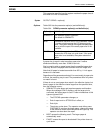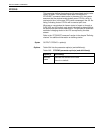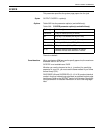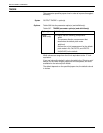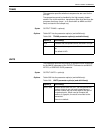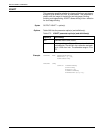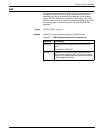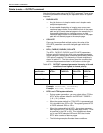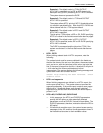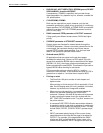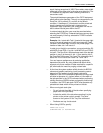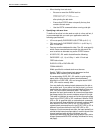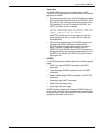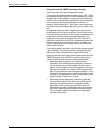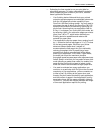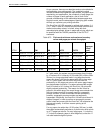
PRINT FORMAT COMMANDS
XEROX DOCUPRINT 180 LPS PDL REFERENCE 6-87
Example 1: The default order is 1TON, OUTPUT
NTO1=NO is specified, and a JDE or JDE dynamic job
descriptor entry (DJDE) containing NTO1=YES is invoked.
The system does not process the DJDE.
Example 2: The default order is 1TON and OUTPUT
NTO1=YES is specified.
The system allows NTO1 printing if NTO1 threshold values
(
n
) are within permitted limits. Note that NTO1 DJDEs are
never allowed with the 1TON system default.
Example 3: The default order is NTO1 and OUTPUT
NTO1=NO is specified.
The job prints 1TON unless a JDE or JDL DJDE specifying
NTO1 is invoked in the first data record after banner pages.
Example 4: The default order is NTO1, OUTPUT
NTO1=YES is specified, and a JDE or JDL DJDE specifying
NTO1=NO is invoked.
The DJDE is processed and the job prints 1TON, if the
system encounters it in the first data record after banner
pages.
• NTO1, OSTK
When printing ordered stock in NTO1 sequence, note the
following:
The ordered stock must be reverse collated in the feeder so
that the first sheet of the set is on the bottom, the second sheet
next, and so on, with the last sheet of the set on top to be fed
first. If the report is larger than the N to 1 threshold, it will print in
1 to N order and the reverse collated stock is then
inappropriate. The system displays the following message and
cycles down when this condition occurs:
OS6908 Page ordering has been reversed. Check
ordered stock.
• NTO1 and segments
When finishing segments are defined in an NTO1 report, the
entire report prints N to 1. The system does not process the
segments separately. If the entire report contains more pages
than the N to 1 threshold allows, even though individual
segments may be less than the threshold, the entire report is
printed 1 to N.
• NTO1=NO, FACEUP=NO, DUPLEX=NO
— In this sequence, the NTO1 and FACEUP parameters
specify the NO option so other potentially affected
parameters, such as DUPLEX, cannot be overridden. The
DUPLEX parameter, therefore, maintains either the YES or
NO option.
— If hierarchical overrides occur, the system issues warning
messages in the JDL and then forces parameters lower in
the hierarchical structure to their workable values.



